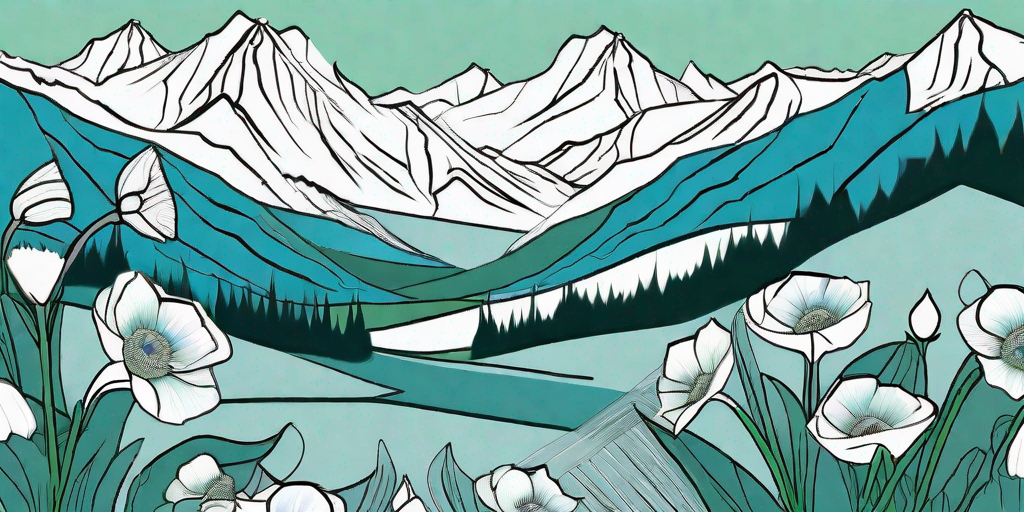
The Himalayan Poppy, also known as Meconopsis betonicifolia, is a flower that has captured the hearts of gardeners and flower enthusiasts worldwide. With its vibrant blue petals and contrasting golden centre, this flower is a sight to behold. But there's more to this flower than meets the eye. Let's delve into the enchanting world of the Himalayan Poppy.
The Origin Story of the Himalayan Poppy
Our story begins in the lofty heights of the Himalayas, where the air is thin and the scenery is breathtaking. The Himalayan Poppy, true to its name, is native to this region, specifically Tibet. It was first discovered by Western explorers in the late 19th century. Since then, it has made its way into gardens and hearts around the world.
But why, you may ask, is this flower so special? Well, apart from its striking appearance, the Himalayan Poppy is also known for its resilience. It thrives in high altitudes and harsh conditions, a testament to its hardy nature. So, if you're looking for a flower that's as tough as it is beautiful, the Himalayan Poppy is the one for you.
How to Grow Your Own Himalayan Poppy
Now that we've piqued your interest, you're probably wondering how you can grow your own Himalayan Poppy. Well, you're in luck! Growing this flower is not as difficult as you might think, provided you follow a few key steps.
Firstly, you'll need to get your hands on some Himalayan Poppy seeds. These can be purchased online or from a local nursery. Once you have your seeds, it's time to get planting!
Step 1: Prepare Your Soil
The Himalayan Poppy prefers well-drained soil with a neutral to slightly acidic pH. You can prepare your soil by adding organic matter, such as compost or well-rotted manure. This will help improve the soil's structure and nutrient content.
Once your soil is ready, it's time to sow your seeds. The best time to do this is in early spring, when the soil is still cool. Sow your seeds about 1cm deep and cover them lightly with soil. Remember to water them regularly, but be careful not to overwater as this can cause the seeds to rot.
Step 2: Provide the Right Conditions
The Himalayan Poppy thrives in cool, moist conditions. It prefers partial shade to full sun, so make sure your plants are not exposed to harsh afternoon sun. If you live in a hot climate, you might need to provide some shade for your plants during the hottest part of the day.
As for temperature, the Himalayan Poppy prefers cooler climates. If you live in a region with hot summers, you might need to provide some extra care to ensure your plants survive the heat.
The Symbolism of the Himalayan Poppy
Flowers often carry symbolic meanings, and the Himalayan Poppy is no exception. In its native Tibet, this flower is considered a symbol of purity and spiritual aspiration. Its vibrant blue colour is associated with the sky and the divine, making it a popular choice for religious ceremonies.
In Western cultures, the Himalayan Poppy is often associated with beauty and resilience. Its ability to thrive in harsh conditions serves as a reminder of the strength and perseverance of the human spirit.
FAQs About the Himalayan Poppy
Now, let's address some common questions about the Himalayan Poppy.
Is the Himalayan Poppy a True Poppy?
Despite its name, the Himalayan Poppy is not a true poppy. It belongs to the family Papaveraceae, which includes poppies, but it is not part of the genus Papaver, which includes the true poppies. So, while it may share some characteristics with true poppies, it is a distinct species in its own right.
Can the Himalayan Poppy Be Grown in Containers?
Yes, the Himalayan Poppy can be grown in containers. However, it requires a deep container to accommodate its long taproot. It also requires regular watering, as container plants tend to dry out faster than those grown in the ground.
Is the Himalayan Poppy Edible?
No, the Himalayan Poppy is not edible. While some species of poppies are used in cooking, the Himalayan Poppy is not one of them. So, while it may be a feast for the eyes, it's best not to include it in your culinary adventures.
Conclusion
There you have it, folks! A comprehensive guide to the enchanting beauty of the Himalayan Poppy. Whether you're a seasoned gardener or a budding flower enthusiast, this flower is sure to add a touch of magic to your garden. So why not give it a try? After all, life's too short for boring flowers!















